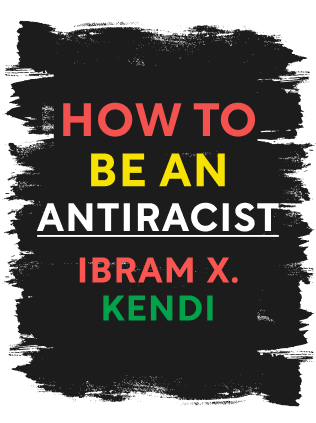

This article is an excerpt from the Shortform book guide to "How to Be an Antiracist" by tIbram X. Kendi. Shortform has the world's best summaries and analyses of books you should be reading.
Like this article? Sign up for a free trial here .
What is ethnic racism? How does it use further divide races to create a hierarchy within a race?
Ethnic racism is the idea that, within a race, some ethnic groups are better than others. In How to Be an Antiracist, Ibram X. Kendi offers the example of how some indigenous people were considered civilized tribes and others were considered wild.
Keep reading to understand ethnic racism, how it started, and Ibram X. Kendi’s experiences with it.
What Is Ethnic Racism?
Ethnic racism is a combination of racist policies and ideas that causes and maintains racial inequities between racialized ethnic groups, the main idea being the belief that there’s a hierarchy within races—certain ethnic groups within a race are superior or inferior to others within the same race.
Example #1: European colonizers decided that there were “Five Civilized Tribes” of Indigenous people. The Seminole, Creek, Choctaw, Chickasaw, and Cherokee were civilized, and all the other Indigenous ethnic groups were wild.
Example #2: The ethnicities African American and Indian are both racialized as Black. A 1999 study found that West Indian immigrants thought African Americans were lazy and lacking family values, and the African Americans thought West Indian immigrants were selfish and arrogant.
The truth is, there is no hierarchy of ethnicities. Ethnic groups are different from each other, but none of them are superior or inferior.
History and Invention of Ethnic Racism
Ethnic racism comes from the slave trade—certain enslavers had favorite ethnic groups and thought these groups made better slaves than others. Most American planters thought Ghanaians made the best slaves and Angolans the worst. The reasoning was invented—one Frechman attributed the strong work ethic of captives from Ghana to the fact that that part of Africa is barren, so people who live there have to work hard to cultivate the land to survive. Allegedly, because Angola had fertile land, it was easy to find food without working hard for it, so Angolans were naturally lazier. However, Angolans were the most traded ethnic group and the first to arrive in the US.
Some ethnic racism may also stem from the idea that continental Africans allegedly enslaved “their own people.” However, Africans who enslaved other Africans didn’t see everyone in Africa as belonging to the same group—as we learned, the Portuguese made up the concept of race, and it wasn’t globally accepted until around the 20th century. Africans who were involved in the slave trade weren’t selling members of their own ethnic group, they were selling other Africans, who were just as different to them as White people.
But Immigrants Do Better Than African Americans
Because inequities between races tend to be very obvious and inequities within races less so, racist policies that create inequalities within groups are less contested even though they can be just as bad as the inequalities between races.
For example, when studies began to reveal that Black immigrants, on average, have a higher family income than African Americans, people wondered why, and then made up their own justifications. For example, a 1996 Economist commentator wrote that Black immigrants are more hardworking and entrepreneurial than African Americans. Therefore, according to the commentator, racism couldn’t have a hand in the difficulties of African Americans because Black immigrants were Black too, and they were doing fine. African Americans were struggling because they were lazier and less motivated.
However, when Black immigrants are compared to immigrants from other racialized groups, the racism that people like the Economist commentator challenged rears its head again. Black immigrants are the most educated group of immigrants to the US, but they earn less than non-Black immigrants and have the highest rate of unemployment.
Black immigrants being more successful than African Americans doesn’t have anything to do with their ethnicity, it has to do with the fact that they’re immigrants. People who choose to immigrate are usually people who are ambitious and resilient or have a lot of resources. Ambition, resilience, and resources make it easier to succeed.
Immigration Laws and Racism
Even though some people inaccurately believe that Black immigrants are superior to African Americans, there were periods of US history where racist power didn’t want any people of color entering the country.
Policies included the Chinese Restriction Act (1882), Emergency Quota Act (1921), and President Coolidge’s Immigration Act (1924) that restricted the immigration of non-White people. Coolidge and his supporters thought that only White immigrants could keep America “American.”
In the 1990s, the Immigration and Nationality Act (1965), the Refugee Act (1980), and the Immigration Act (1900) were supposed to make up for the Coolidge-era policies by encouraging immigration to the US from non-European countries. The new policies did increase immigration, and by 2000, the Latinx immigrant population was 14.1 million (compared to 4.2 million in 1980) and in 2015, Black immigrants made up 8.7% (three times as high as the 1980 number) of the country’s Black population.
Now, 100 years later, Jeff Sessions and other American politicians are trying to go back to the Coolidge era. Sessions said that the current immigration numbers are as high as those of 1924 and that, as in 1924, the US should limit immigration again.
Ibram’s Experiences
Ibram has had plenty of experience with ethnic racism over the years. When he was younger, he held ethnically racist ideas that he later realized were a problem.
Eighth Grade Class
In Ibram’s eighth grade class, everyone was made fun of for something. Because of his large head, Ibram was nicknamed Bonk, after a cartoon character with a ridiculously large head who headbutted his enemies.
Another student, Kwame, was Ghanaian, and the class made fun of him for being an immigrant. They likened him to Akeem, a prince from a fictional African country who comes to Queens to find a wife in the movie Coming to America. Throughout the movie, characters make fun of Akeem by suggesting that Africa is uncivilized and things like wearing clothes must be a new experience for him.
In the Neighborhood
Ibram also experienced tensions between ethnic groups in his neighborhood. Ibram’s neighbors were a Haitian immigrant couple with sons Ibram became friends with. While the parents were polite, they kept Ibram at a distance. He thought it might have had something to do with the fact that at the time, African Americans were exhibiting bigotry towards Haitian immigrants.
Where Are You From?
People often assume Ibram is an immigrant because ethnic racists assume that as a successful writer and professor, he can’t be African American. When he answers that he’s from Queens, his father is from New York, his mother is from Georgia, and that he’s a descendant of enslaved Africans, the questioners give up. They either think he’s an exception, or they lecture him about how lazy his ethnic group generally is.

———End of Preview———
Like what you just read? Read the rest of the world's best book summary and analysis of Ibram X. Kendi's "How to Be an Antiracist" at Shortform .
Here's what you'll find in our full How to Be an Antiracist summary :
- What racism is and how it evolved
- How you might have subtle racist thoughts and not even be aware of them
- Why being "not racist" isn't good enough






